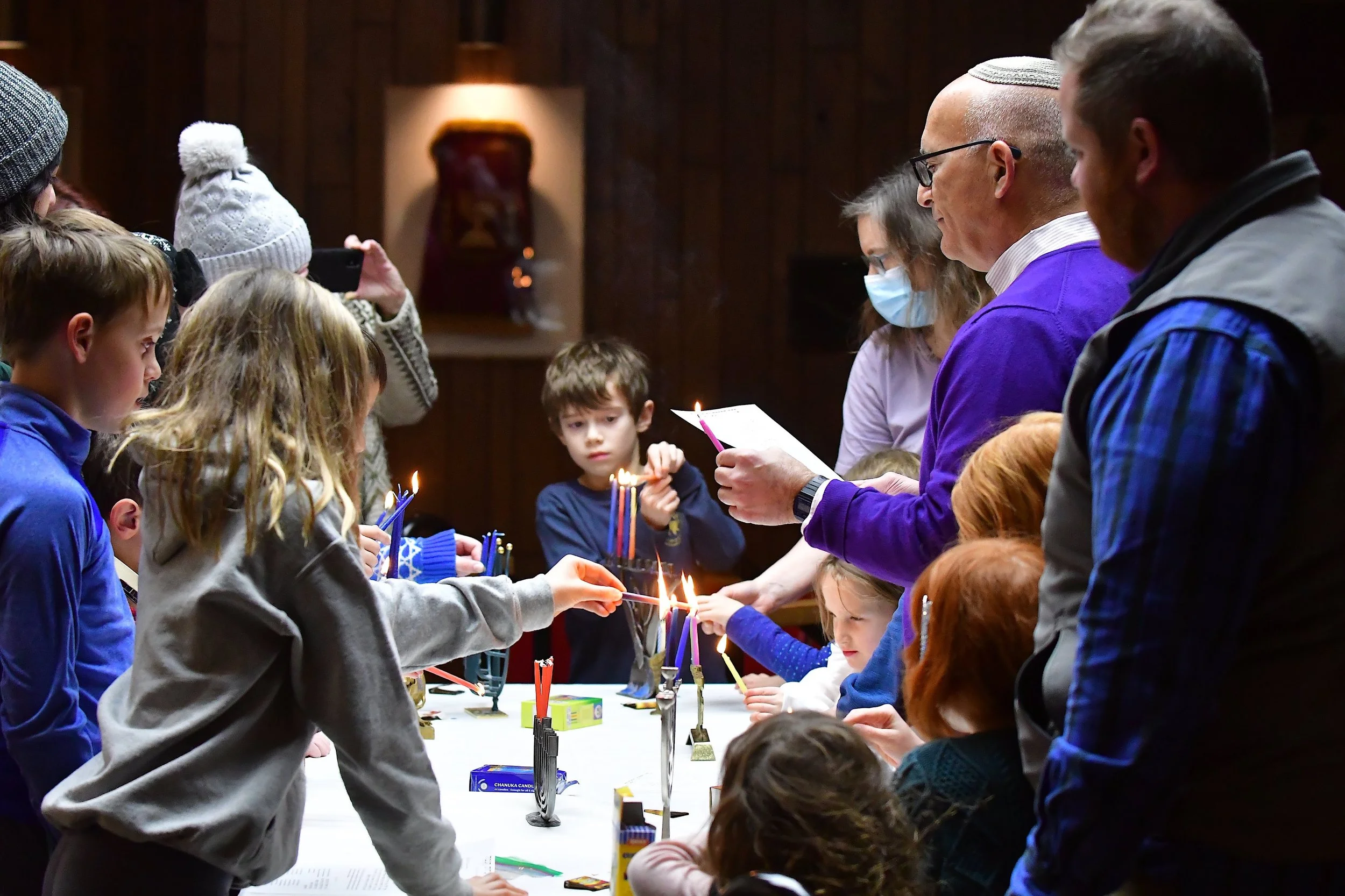Dvar Torah delivered on Friday, Aug. 19, 2011, Shabbat Ekev
Thoughts on Ekev (5771/2011)
(Deut. 7:12 – 11:25)
We are now, with our reading of Parshat Ekev, in the third portion of Sefer Devarim/ The Book of Deuteronomy. “Devarim” means “words,” referring to the many, many words spoken by Moses in this fifth book of the Torah, as he recounts and elaborates upon many of the stories and laws introduced in the earlier books of the Torah. Indeed, the alternative traditional name for this book --- “Mishneh Torah”/ “Repetition of the Torah” --- parallels the English name of the book – “Deuteronomy” – the name “Deuteronomy” being derived from two Greek roots “Deutero” and “Nomos” which mean “Second Law.”
As we go through these remaining weeks of our yearly Torah cycle before concluding and beginning again at Simchat Torah, we may notice many such restatements. For example, Parshat Ekev includes a retelling of the story of how the people were provided with manna from heaven after leaving Egypt and entering the desert wilderness, adding the famous observation that:
לֹא עַל-הַלֶּחֶם לְבַדּוֹ יִחְיֶה הָאָדָם--כִּי עַל-כָּל-מוֹצָא פִי-יְהוָה, יִחְיֶה הָאָדָם
“a human being does not live by bread alone, but one may live on anything that the Eternal decrees.” (Deut. 8:3)
Much of the remainder of Deuteronomy consists of Moses’ inspirational words to the people – sometimes in his own voice, sometimes acting as a mouthpiece for God’s words, sometimes in an ambiguous mixture of both. Words that seek to motivate us to follow God’s laws, teachings, statutes and commandments.
This week’s portion has one of the most well-known of these motiviational passages. It’s found near the end of the parasha and forms the traditional second paragraph of the Shema. In that passage, God asserts that if we follow the call to love and serve God with all our hearts and souls, then, in return, God promises
יד וְנָתַתִּי מְטַר-אַרְצְכֶם בְּעִתּוֹ, יוֹרֶה וּמַלְקוֹשׁ; וְאָסַפְתָּ דְגָנֶךָ, וְתִירֹשְׁךָ וְיִצְהָרֶךָ. טו וְנָתַתִּי עֵשֶׂב בְּשָׂדְךָ, לִבְהֶמְתֶּךָ; וְאָכַלְתָּ, וְשָׂבָעְתָּ.
“I will grant the rain for your land in season, the early rain and the late. You shall gather in your new grain and wine and oil. And I will provide grass in your fields for your cattle, and you will eat and be content.” (Deut. 11: 14-15) (And then it goes on to say that if we succumb to idolatry then the rains will stop and the land will become barren.)
That entire paragraph was long ago removed by Reform Judaism from its prayerbooks.
The early Reformers (and the early Reconstructionists for that matter) felt that this traditional second paragraph of the Shema presented a view of cause and effect that was too literalistic and supernatural. However, the Conservative and Orthodox siddurim kept it in and the Reconstructionists later reintroduced as an optional reading , arguing that it could be interpreted metaphorically: If we don’t care for our planet, God’s creation, then the climate will go out of whack and the environment that sustains us will be threatened. In the Reconstructionist siddur Kol Haneshama that we use on Shabbat mornings, this passage from this week’s Torah portion is included as the second of two alternative readings for the middle paragraph of the Shema.
However, as I was studying the Torah portion this week, one particular passage from Moshe’s long “spiritual pep talk” really spoke to me this year. It’s the section where Moses preaches about the spiritual dangers that come from prosperity. In particular, he warns us that when we have plenty to eat and drink, and lots of material wealth, we might be tempted to think:
כֹּחִי וְעֹצֶם יָדִי, עָשָׂה לִי אֶת-הַחַיִל הַזֶּה
“My own power and the might of my own hand have won this wealth for me.” (Deut. 8:17).
Rather, the Torah goes on to say:
וְזָכַרְתָּ, אֶת-יְהוָה אֱלֹהֶיךָ--כִּי הוּא הַנֹּתֵן לְךָ כֹּחַ, לַעֲשׂוֹת חָיִל: לְמַעַן הָקִים אֶת-בְּרִיתוֹ אֲשֶׁר-נִשְׁבַּע לַאֲבֹתֶיךָ, כַּיּוֹם הַזֶּה
“Remember that it is the Eternal your God who gives you the power to get wealth, in fulfillment of the covenant made on oath to your ancestors, as is still the case.” (Deut. 8:18).
We hear so much these days from certain factions of our society who claim that extended unemployment benefits would discourage people from seeking work, or that those who are poor find themselves that way because they have not tried hard enough to advance themselves. Or that those of us who enjoy material well-being that surpasses the majority of human beings on the planet, have gotten to where we are through our own initiative in some mythical “free market.”
But Torah reminds us that our efforts go only so far. We are constantly in danger of the hubris of thinking
כֹּחִי וְעֹצֶם יָדִי, עָשָׂה לִי אֶת-הַחַיִל הַזֶּה
“My own power and the might of my own hand have won this wealth for me.”
Our tradition reminds us that there is so much about our own personal circumstances that comes from factors beyond our control. Call that “God” if you want. Or call that sociological, physical and historical circumstance if you want.
But, for me anyway, the bottom line is two-fold:
First: We have to remember all of our blessings, all of the miracles and good things that are with us morning, noon and night. And
Second: We need to avoid being judgmental about or hard hearted towards those in need. Rather, we must build a society in which all who are needy are helped, and which those who can afford it most do their fair share.
Because no one can honestly say: כֹּחִי וְעֹצֶם יָדִי, עָשָׂה לִי אֶת-הַחַיִל הַזֶּה
“My own power and the might of my own hand have won this wealth for me.”
Rather, our blessings are for sharing.
Shabbat shalom.
© Rabbi David Steinberg, 5771/2011

